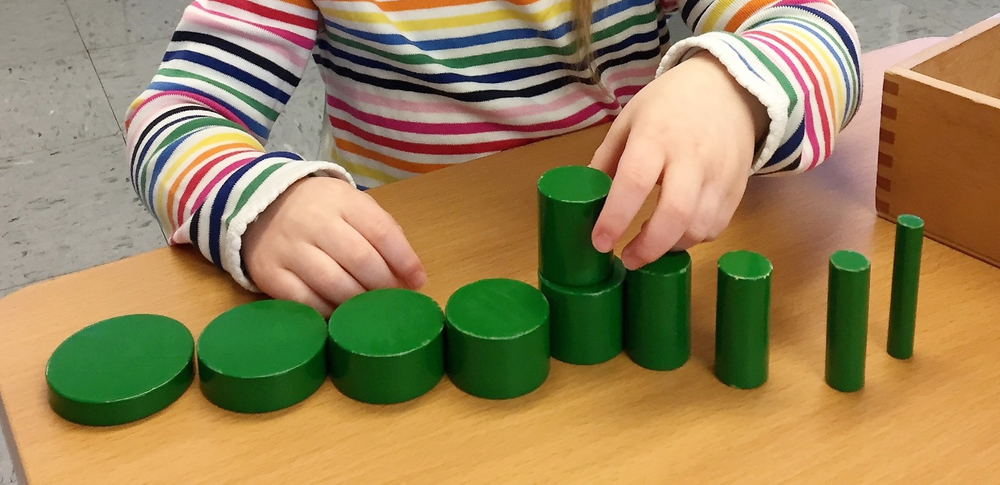
A companion material to the Knobbed Cylinders, the Knobless Cylinders offer children extended practice with the relationships of height, width and volume. Four boxes are available to explore, with each containing a series of ten cylinders of varying relationships. In one box, the height of the cylinders is identical, but the widths change. In another, the widths are identical, but the height changes. In a third, the width decreases as the height increases. In a fourth, the width increases as the height decreases. The proportions of these cylinders match those of the Knobbed Cylinders but are presented in a box instead of a block, increasing the challenge for children to sequence them and demanding a more refined fine motor development to manage them – without rolling off the table!
Unlike the Knobbed Cylinders, this material has no concrete control of error. In the Knobbed Cylinders, the child was able to determine the sequence of volume from the spaces in the cylinder block. If the child returned the cyinders to the block out of order, he or she would have a cylinder left over with no space to fit. The Knobless Cylinders require the child to already have developed sufficient concentration and the visual and tactile discernment to order the cylinders without the assistance of the block.
Like the other Sensorial Materials, the Knobless Cylinders also support the child’s understanding of our Base Ten system, by presenting materials which are related in dimensions of tenths. And while the child relies on his own intellect to sort the cylinders when they are on the table, he does have to return them to their box from largest to smallest in order to have sufficient room for them all to fit and the lid to close.
The Cylinders, along with the other early Sensorial materials, can be combined in beautiful proportioned layouts. At this time in the year, look for children to discover these connections between the Sensorial materials, building towers from the cylinders or exploring how each of the cylinders can match to the same proportions when place on top of its related cube in the Pink Tower. Look for children’s sense of proportion, balance and design to unfold as they place and re-place these materials. While the extensions of the Sensorial materials are rarely demonstrated by a teacher, their inspiration, from child to child across multiple years in the classroom, becomes a welcome benchmark in our multiyear cycles.
#Curriculum #Sensorial #ForTeachers #ForParents #Primary #FirstPlane
